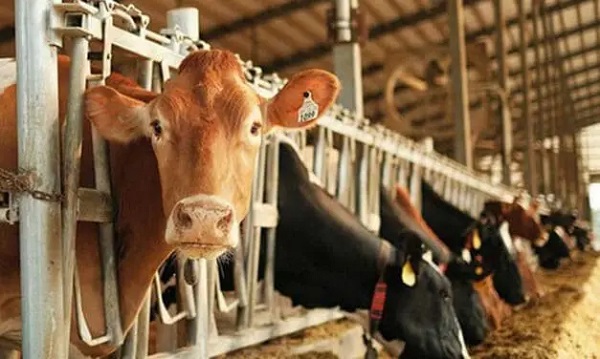Alberta
MGM, HBO, CBS, Paramount and other studios all working in Alberta right now!

Film credit attracts productions worth nearly $1B
A key part of Alberta’s Recovery Plan, the Film and Television Tax Credit is attracting major productions to the province, diversifying the economy and creating thousands of new jobs.
Since the program’s launch in January 2020, it has attracted 50 productions to Alberta with total production costs of $955 million, creating 9,000 new direct and indirect jobs in the province.
In March 2021, Alberta’s government removed the $10-million per-project cap from the Film and Television Tax Credit to make the province an even more desirable location for larger productions.
Cameras are rolling on film and television productions across Alberta, injecting hundreds of millions of dollars in investment into the economy as these productions hire local crews, actors and extras, and use local businesses.
The Film and Television Tax Credit, combined with Alberta’s competitive tax environment, affordable labour costs and breathtaking scenery, has made the province a prime choice for medium and big-budget television and film projects that have a positive impact on Alberta’s economy.
HBO is currently filming its new television series The Last of Us in Alberta. The project is the single largest television series production in Canadian history and is expected to create thousands of jobs.
“The boom in our film industry is the perfect example of Alberta’s Recovery Plan in action. Thanks to the Film and Television Tax Credit, and our recent improvements to it, we are witnessing a new billion-dollar industry take shape right before our eyes, further diversifying the economy and creating new jobs.”
Jason Kenney, Premier
“Alberta is the new Hollywood. With our stunning landscapes, our immense talent and our world-class studios, our province is being showcased on the big screen in a way that it never has before, with thousands of jobs being created in everything from carpentry to catering.”
Doug Schweitzer, Minister of Jobs, Economy and Innovation
“Film productions like The Last of Us and Ghostbusters mean thousands of new jobs for rural Albertans both on and off set. With landscapes from the Rocky Mountains to the Prairies, Alberta is becoming a global hub for film. New multimillion-dollar investments in the film industry are getting Albertans back to work and driving Alberta’s economic recovery. I look forward to seeing even more of Alberta on the big screen.”
Nate Horner, Associate Minister of Rural Economic Development
“From breathtaking landscapes to a skilled and growing workforce, Alberta has much to offer the global production community. The province’s enhanced film and television production incentive has also made it an especially attractive destination for HBO. We look forward to filming The Last of Us here, and to working with talented Alberta crews.”
Jay Roewe, senior vice-president, Production & Incentives, HBO
“Alberta’s Film and Television Tax Credit is a game-changer in terms of production volumes. It has created thousands of well-paying jobs and numerous business opportunities. High-profile projects such as The Last of Us are a major driver of jobs, Alberta businesses and training. Projects like this benefit numerous industries ranging from fabric suppliers to companies in the hospitality industry. Alberta’s spectacular landscapes are being shared globally, elevating our economic standing in the global marketplace.”
Damian Petti, president, IATSE Local 212
“We are pleased to see the Alberta government is supporting Alberta’s creative industries by their recent enhancements of our film and television tax credits and production incentives. From actors to puppeteers to stunt performers, this is fantastic news for ACTRA Alberta performers, our production community and Alberta’s economy.”
Tina Alford, branch representative, ACTRA Alberta
“Alberta’s enhanced incentive program and strong commitment to increasing investment from global studios is working to grow the creative economy and provide unparalleled opportunities for Alberta’s creative talent. On behalf of the major studios we represent, we’re thrilled that the Alberta government and industry have worked together to create jobs for thousands of skilled Albertans in front of and behind the camera, and to showcase the beauty and talent of Alberta on the global stage.”
Wendy Noss, president, MPA-Canada
“HBO is synonymous with quality and The Last of Us has long been touted as one of the most cinematic video game series ever created – a perfect marriage to Alberta’s cinematic landscapes, light and picturesque communities. We are grateful to have this tentpole series in the province developing the industry and creating hundreds of jobs for our hard-working and talented crews, as well as a great economic stimulus in communities of southern Alberta. This project, along with enhancements of the Alberta Film and Television Tax Credit, will be looked back on as cornerstone moments in a booming film production sector for years to come.”
Brock Skretting, head of advocacy, Keep Alberta Rolling
“The changes to Alberta’s Film and Television Tax credit can only be seen as a success story. Not only are we creating good high-paying jobs for Albertans, but it is also an important step in boosting Alberta’s economy at time when we need it. No matter what the business is – gas stations, lumberyard, coffee shop – movie money is being spent in Alberta.”
Mike Dunphy, business agent, Teamsters Local 362
Quick facts
- Alberta’s Film and Television Tax Credit, launched in January 2020, offers a refundable Alberta tax credit certificate on eligible Alberta production and labour costs to corporations that produce films, television series and other eligible screen-based productions in the province.
- The Film and Television Tax Credit complements the Alberta Made Production Grant, and is part of the government’s commitment to grow Alberta’s cultural industries by 25 per cent over the next decade.
- In 2019, combined consumer spend globally for theatrical and home entertainment reached $101 billion, a 34 per cent increase since 2015.
- The film and television industry is experiencing significant growth nationally and globally.
- Global spending in the industry is projected to reach about $113 billion by 2022.
- It is expected more than $50 billion of that spending will be in North America.
- Last year, the Canadian film and television industry was valued at $3 billion and employed more than 54,000 workers.
- Every year, Alberta graduates more than 3,000 creative industry professionals from its post-secondary institutions.
- According to industry estimates, more than 3,200 Albertans are employed in the province’s motion picture and video industry.
- According to Statistics Canada data:
- Every $1 million of production activity in the screen-based production sector creates about 13 Alberta jobs.
- Every $1 million of government investment under the Film and Television Tax Credit program is expected to support about 85 Alberta jobs.
- The budget for the Film and Television Tax Credit in 2021-22 is $50 million.
Related information
Alberta
Alberta’s new diagnostic policy appears to meet standard for Canada Health Act compliance

From the Fraser Institute
By Nadeem Esmail, Mackenzie Moir and Lauren Asaad
In October, Alberta’s provincial government announced forthcoming legislative changes that will allow patients to pay out-of-pocket for any diagnostic test they want, and without a physician referral. The policy, according to the Smith government, is designed to help improve the availability of preventative care and increase testing capacity by attracting additional private sector investment in diagnostic technology and facilities.
Unsurprisingly, the policy has attracted Ottawa’s attention, with discussions now taking place around the details of the proposed changes and whether this proposal is deemed to be in line with the Canada Health Act (CHA) and the federal government’s interpretations. A determination that it is not, will have both political consequences by being labeled “non-compliant” and financial consequences for the province through reductions to its Canada Health Transfer (CHT) in coming years.
This raises an interesting question: While the ultimate decision rests with Ottawa, does the Smith government’s new policy comply with the literal text of the CHA and the revised rules released in written federal interpretations?
According to the CHA, when a patient pays out of pocket for a medically necessary and insured physician or hospital (including diagnostic procedures) service, the federal health minister shall reduce the CHT on a dollar-for-dollar basis matching the amount charged to patients. In 2018, Ottawa introduced the Diagnostic Services Policy (DSP), which clarified that the insured status of a diagnostic service does not change when it’s offered inside a private clinic as opposed to a hospital. As a result, any levying of patient charges for medically necessary diagnostic tests are considered a violation of the CHA.
Ottawa has been no slouch in wielding this new policy, deducting some $76.5 million from transfers to seven provinces in 2023 and another $72.4 million in 2024. Deductions for Alberta, based on Health Canada’s estimates of patient charges, totaled some $34 million over those two years.
Alberta has been paid back some of those dollars under the new Reimbursement Program introduced in 2018, which created a pathway for provinces to be paid back some or all of the transfers previously withheld on a dollar-for-dollar basis by Ottawa for CHA infractions. The Reimbursement Program requires provinces to resolve the circumstances which led to patient charges for medically necessary services, including filing a Reimbursement Action Plan for doing so developed in concert with Health Canada. In total, Alberta was reimbursed $20.5 million after Health Canada determined the provincial government had “successfully” implemented elements of its approved plan.
Perhaps in response to the risk of further deductions, or taking a lesson from the Reimbursement Action Plan accepted by Health Canada, the province has gone out of its way to make clear that these new privately funded scans will be self-referred, that any patient paying for tests privately will be reimbursed if that test reveals a serious or life-threatening condition, and that physician referred tests will continue to be provided within the public system and be given priority in both public and private facilities.
Indeed, the provincial government has stated they do not expect to lose additional federal health care transfers under this new policy, based on their success in arguing back previous deductions.
This is where language matters: Health Canada in their latest CHA annual report specifically states the “medical necessity” of any diagnostic test is “determined when a patient receives a referral or requisition from a medical practitioner.” According to the logic of Ottawa’s own stated policy, an unreferred test should, in theory, be no longer considered one that is medically necessary or needs to be insured and thus could be paid for privately.
It would appear then that allowing private purchase of services not referred by physicians does pass the written standard for CHA compliance, including compliance with the latest federal interpretation for diagnostic services.
But of course, there is no actual certainty here. The federal government of the day maintains sole and final authority for interpretation of the CHA and is free to revise and adjust interpretations at any time it sees fit in response to provincial health policy innovations. So while the letter of the CHA appears to have been met, there is still a very real possibility that Alberta will be found to have violated the Act and its interpretations regardless.
In the end, no one really knows with any certainty if a policy change will be deemed by Ottawa to run afoul of the CHA. On the one hand, the provincial government seems to have set the rules around private purchase deliberately and narrowly to avoid a clear violation of federal requirements as they are currently written. On the other hand, Health Canada’s attention has been aroused and they are now “engaging” with officials from Alberta to “better understand” the new policy, leaving open the possibility that the rules of the game may change once again. And even then, a decision that the policy is permissible today is not permanent and can be reversed by the federal government tomorrow if its interpretive whims shift again.
The sad reality of the provincial-federal health-care relationship in Canada is that it has no fixed rules. Indeed, it may be pointless to ask whether a policy will be CHA compliant before Ottawa decides whether or not it is. But it can be said, at least for now, that the Smith government’s new privately paid diagnostic testing policy appears to have met the currently written standard for CHA compliance.

Lauren Asaad
Policy Analyst, Fraser Institute
Alberta
Housing in Calgary and Edmonton remains expensive but more affordable than other cities

From the Fraser Institute
By Tegan Hill and Austin Thompson
In cities across the country, modest homes have become unaffordable for typical families. Calgary and Edmonton have not been immune to this trend, but they’ve weathered it better than most—largely by making it easier to build homes.
Specifically, faster permit approvals, lower municipal fees and fewer restrictions on homebuilders have helped both cities maintain an affordability edge in an era of runaway prices. To preserve that edge, they must stick with—and strengthen—their pro-growth approach.
First, the bad news. Buying a home remains a formidable challenge for many families in Calgary and Edmonton.
For example, in 2023 (the latest year of available data), a typical family earning the local median after-tax income—$73,420 in Calgary and $70,650 in Edmonton—had to save the equivalent of 17.5 months of income in Calgary ($107,300) or 12.5 months in Edmonton ($73,820) for a 20 per cent down payment on a typical home (single-detached house, semi-detached unit or condominium).
Even after managing such a substantial down payment, the financial strain would continue. Mortgage payments on the remaining 80 per cent of the home’s price would have required a large—and financially risky—share of the family’s after-tax income: 45.1 per cent in Calgary (about $2,757 per month) and 32.2 per cent in Edmonton (about $1,897 per month).
Clearly, unless the typical family already owns property or receives help from family, buying a typical home is extremely challenging. And yet, housing in Calgary and Edmonton remains far more affordable than in most other Canadian cities.
In 2023, out of 36 major Canadian cities, Edmonton and Calgary ranked 8th and 14th, respectively, for housing affordability (relative to the median after-tax family income). That’s a marked improvement from a decade earlier in 2014 when Edmonton ranked 20th and Calgary ranked 30th. And from 2014 to 2023, Edmonton was one of only four Canadian cities where median after-tax family income grew faster than the price of a typical home (in Calgary, home prices rose faster than incomes but by much less than in most Canadian cities). As a result, in 2023 typical homes in Edmonton cost about half as much (again, relative to the local median after-tax family income) as in mid-sized cities such as Windsor and Kelowna—and roughly one-third as much as in Toronto and Vancouver.
To be clear, much of Calgary and Edmonton’s improved rank in affordability is due to other cities becoming less and less affordable. Indeed, mortgage payments (as a share of local after-tax median income) also increased since 2014 in both Calgary and Edmonton.
But the relative success of Alberta’s two largest cities shows what’s possible when you prioritize homebuilding. Their approach—lower municipal fees, faster permit approvals and fewer building restrictions—has made it easier to build homes and helped contain costs for homebuyers. In fact, homebuilding has been accelerating in Calgary and Edmonton, in contrast to a sharp contraction in Vancouver and Toronto. That’s a boon to Albertans who’ve been spared the worst excesses of the national housing crisis. It’s also a demographic and economic boost for the province as residents from across Canada move to Alberta to take advantage of the housing market—in stark contrast to the experience of British Columbia and Ontario, which are hemorrhaging residents.
Alberta’s big cities have shown that when governments let homebuilders build, families benefit. To keep that advantage, policymakers in Calgary and Edmonton must stay the course.
-

 Business2 days ago
Business2 days agoCanada Hits the Brakes on Population
-

 Crime1 day ago
Crime1 day agoBrown University shooter dead of apparent self-inflicted gunshot wound
-

 Health17 hours ago
Health17 hours agoRFK Jr reversing Biden-era policies on gender transition care for minors
-

 Agriculture2 days ago
Agriculture2 days agoWhy is Canada paying for dairy ‘losses’ during a boom?
-

 Frontier Centre for Public Policy2 days ago
Frontier Centre for Public Policy2 days agoCanada Lets Child-Porn Offenders Off Easy While Targeting Bible Believers
-

 Business2 days ago
Business2 days agoWhite House declares inflation era OVER after shock report
-

 Business1 day ago
Business1 day agoTrump signs order reclassifying marijuana as Schedule III drug
-

 Alberta19 hours ago
Alberta19 hours agoAlberta’s new diagnostic policy appears to meet standard for Canada Health Act compliance













